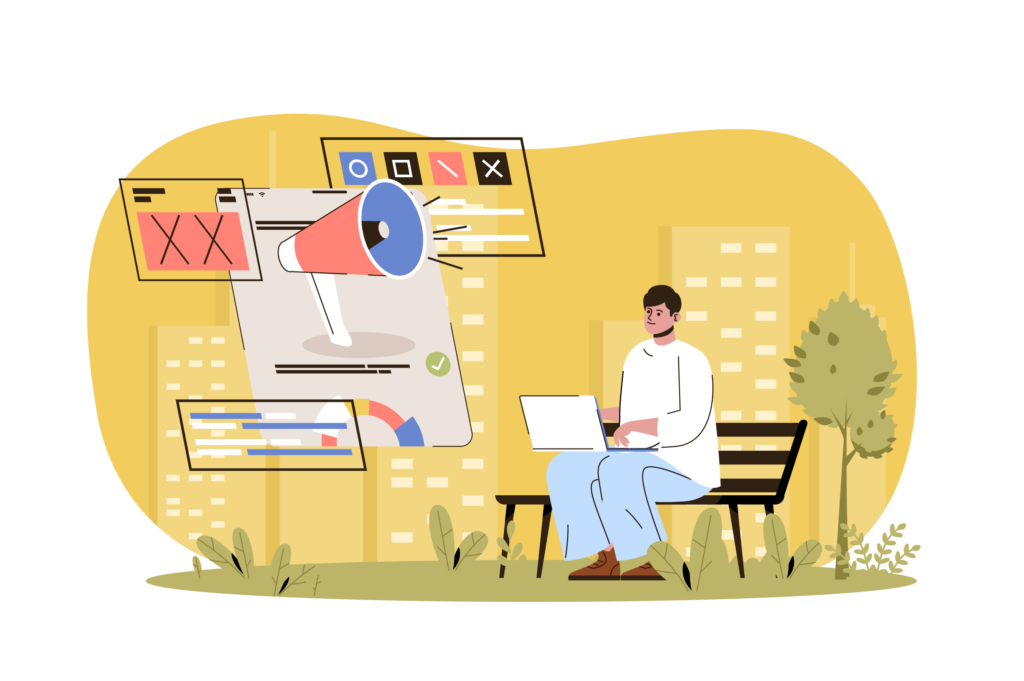When it comes to digital marketing, there are a lot of decisions that need to be made. One of the most common questions that arises is whether to focus on iterating on Ads or on Landing page? Both options can be effective in achieving goals, but which one should you focus on? In this blog post, we will discuss the pros and cons of both so you can make an informed decision.
Ads and landing pages are two essential parts of digital marketing. Ads are the messages that you create and put out into the world to attract potential customers. Landing pages are the pages your visitors land on when they click on your ad. It’s important to understand the role both play in your overall digital marketing strategy. Ads drive traffic to your website, while landing pages turn that traffic into leads and customers. So when deciding whether to focus on iterating on Ads or on Landing page, it’s important to consider the needs of your business.
1. Understand the importance of both Ads and Landing pages
When it comes to conversion rate optimization, it is important to understand the importance of both Ads and Landing pages. Ads are what draw people in to your site, while Landing pages are the pages that ultimately convert visitors into customers. Ads are essential in order to drive traffic to your site, and without them your conversion rate optimization efforts will be for naught. However, if you don’t have a well-crafted landing page that is optimized for conversions, then it is unlikely you will generate many sales or leads. Ads from sources such as Facebook Ads, Google Ads, and Bing Ads can bring in traffic, but it is the landing page that will actually convert the traffic into sales or leads.
2. Analyze the customer journey to determine what needs to be maximized
When it comes to focusing on either iterating on Ads or on Landing pages, it is important to analyze the customer journey to determine what needs to be maximized. In order to do so, you must look at the conversion rate optimization for each of the channels, such as Facebook Ads, Google Ads, and Bing Ads, and measure what changes in the landing page will have the most impact in terms of conversions. Additionally, analyzing the customer journey also allows you to identify potential pain points and areas where you can optimize the user experience to further increase conversions. By conducting this analysis, you can hone in on which features to prioritize and iterate on when it comes to Ads or Landing Pages.
3. Analyze metrics such as customer lifetime value and customer acquisition costs
When deciding whether to focus on iterating on Ads or on Landing page, it’s important to consider metrics such as customer lifetime value and customer acquisition costs. These metrics are important to understand in order to determine how effective your Ads or Landing page are in driving conversions. For example, if you’re running a Facebook ad campaign and you’re seeing high customer acquisition costs, it may be beneficial to focus more on conversion rate optimization for the landing page. Alternatively, if the customer lifetime value is high, it may be more beneficial to focus more on improving your facebook ads, google ads, or bing ads. Ultimately, it’s important to analyze metrics such as customer lifetime value and customer acquisition costs in order to determine what Ads or Landing page changes will yield the most successful results.
4. Evaluate the results of Ads and Landing pages testing
After you have optimized your Ads and Landing pages, you will want to evaluate the results of your testing. This is an important step of the Conversion Rate Optimization process and can help you determine whether you should focus more on iterating on Ads or on Landing pages.
For example, if you have run Ads on Facebook, Google, and Bing, you can compare their performance to determine which platform is most effective. You can then adjust your campaigns accordingly. Similarly, by measuring the conversion rate of your Landing page, you can determine if it is optimized for the highest possible performance. If not, you can use A/B testing and other methods to improve it. Ultimately, evaluating the results of Ads and Landing pages testing is key to ensure that your campaigns are as effective as possible.
5. Prioritize the optimization of Ads or Landing pages based on the collected data
When it comes to conversion rate optimization, you should prioritize the optimization of Ads or Landing pages based on the collected data. You can use A/B testing to optimize your landing pages and improve conversion rates. Additionally, you can use various techniques such as split testing, heatmaps, and user testing to improve your landing page’s performance. On the other hand, you can use platforms such as Facebook Ads, Google Ads, and Bing Ads to optimize your Ads and increase your reach. Ultimately, the best approach to take is to focus on iterating on both Ads and Landing pages as you experiment with different strategies and tactics.

6. Make sure to test only one variable at a time when optimizing Ads or Landing pages
When it comes to maximizing conversion rates, it is important to remember to test only one variable at a time when optimizing Ads or Landing pages. Whether you are running Facebook Ads, Google Ads, or Bing Ads, the goal is to see which ad or landing page is the most effective in converting visitors into customers. Testing multiple variables at once will not give you an accurate picture of what works and what doesn’t. By testing a single variable, you can more accurately determine what is causing the increase or decrease in conversions. Properly analyzing the results and optimizing accordingly can improve your conversion rate significantly.
7. Monitor the results of the optimization to ensure the desired results are achieved
After you focus on iterating on your landing page and/or optimizing your Facebook Ads, Google Ads, or Bing Ads, it’s important to monitor the results of the optimization in order to ensure the desired results are achieved. This can be done by tracking your conversion rate and other key metrics such as website traffic, cost per click, click-through rate, and more. With the right metrics in place, you can determine which changes are resulting in the desired outcomes and which ones are not, allowing you to make changes as needed to increase your conversion rate.
8. Update Ads or Landing pages accordingly based on customer feedback and outcomes
If you’re looking to improve your conversion rate optimization, then you should focus on iterating on both your ads and your landing page. Ads are the first step in a potential customer’s journey, and they should be enticing enough to draw them in. But once they’re on your landing page, they need to be able to convert. So, it’s important to update ads and landing pages accordingly based on customer feedback and outcomes. Whether you’re using Facebook Ads, Google Ads, or Bing Ads, make sure to monitor your performance and adjust your ads and landing pages as needed. This is the only way to ensure your ads are delivering the best possible results.
In summary, when considering which to prioritize between Ads and Landing pages, it is essential to take into account the requirements of your target audience, the objectives of your organization, and the available funds. Additionally, it is significant to be conscious of the possibility that certain modifications, such as A/B testing, may result in diverse effects.
I’m Julio Lopez, a dedicated digital marketing specialist. My passion is helping businesses grow by making meaningful connections through marketing. I’ve learned a lot on my journey in this field, focusing on both creative thinking and smart planning to achieve success.

